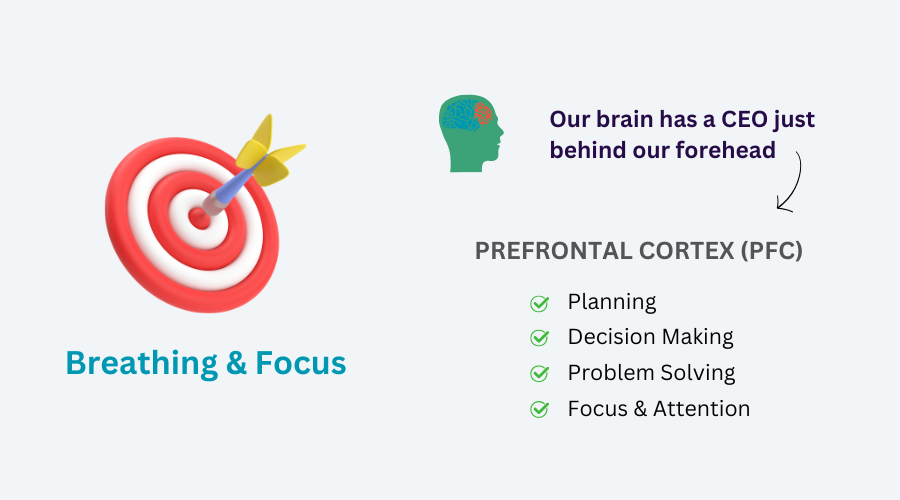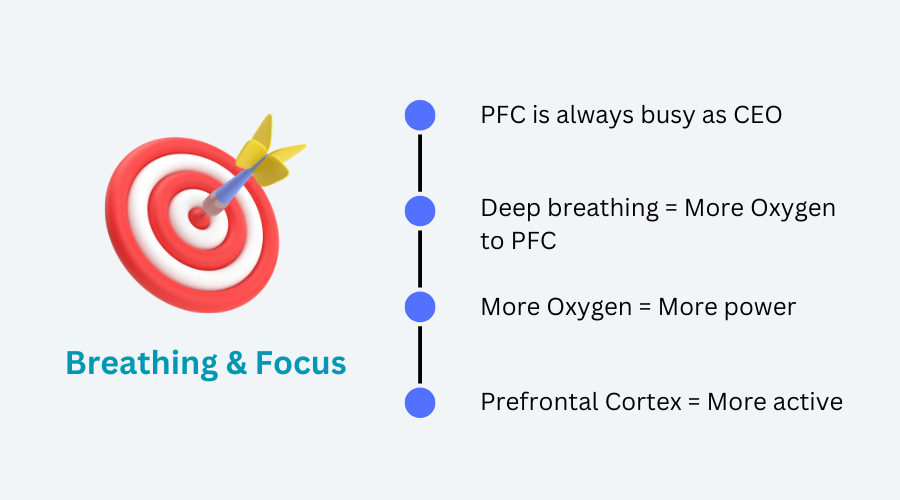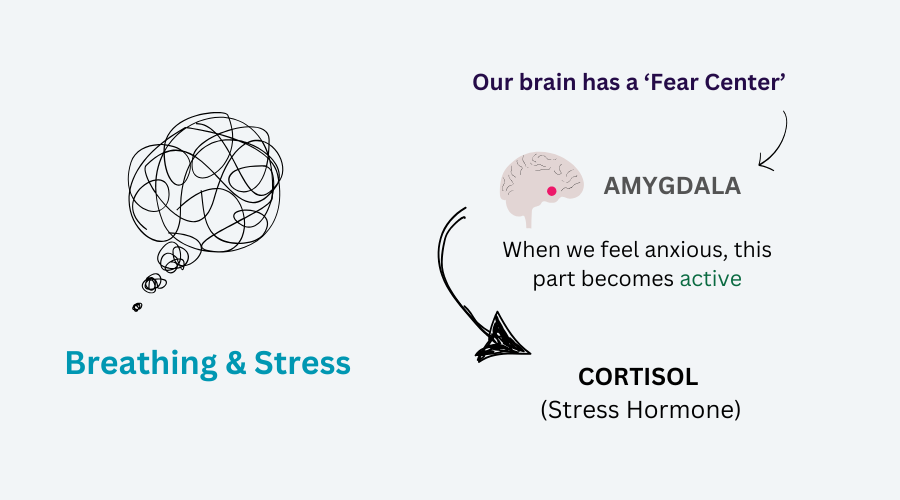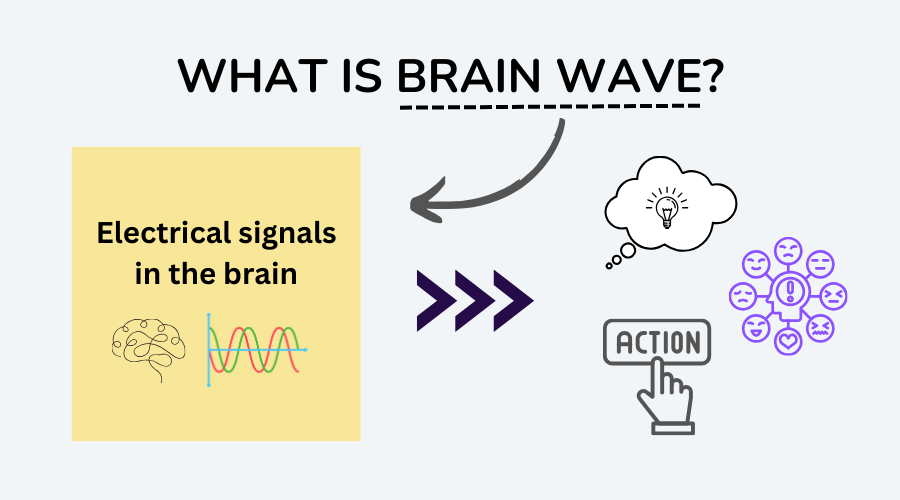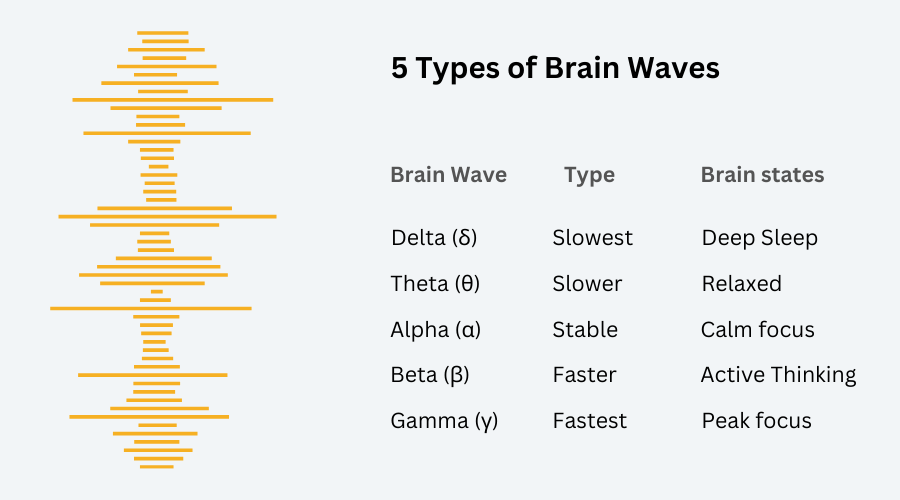How are you breathing right now? Slow, fast, or deep? No matter how you breathe, your breath determines your focus, mental state, energy, and life. Every breath supplies oxygen to your brain, keeps your heart moving and determines your mind.
An average person takes an average of 20,000 to 25,000 breaths every day. How many of these do you take consciously? Probably not even one. But your life might have changed if you took a few of them consciously and controlled.
90% of people do not know how to breathe properly. How many of us know how much power a single breath holds? Let’s find out in detail.

Breathing: The most important accessory of life
You can survive for weeks without food, a few days without water, but without breath? A few minutes. This shows exactly how important breath is to life.
Breathing connects the brain and the body and can directly influence brain activity. When we take deep and conscious breaths, our parasympathetic nervous system is activated—it calms our brain and reduces stress.

Breathing happens automatically – without our effort. This may have reduced its importance to us a little. We do not consider it separately and don’t give much attention as we get the air effortlessly. But the real picture is completely different.
Breathing: Your overlooked superpower
Yes, that’s true. Simple, natural and controlled breathing can become your extraordinary superpower.
How?
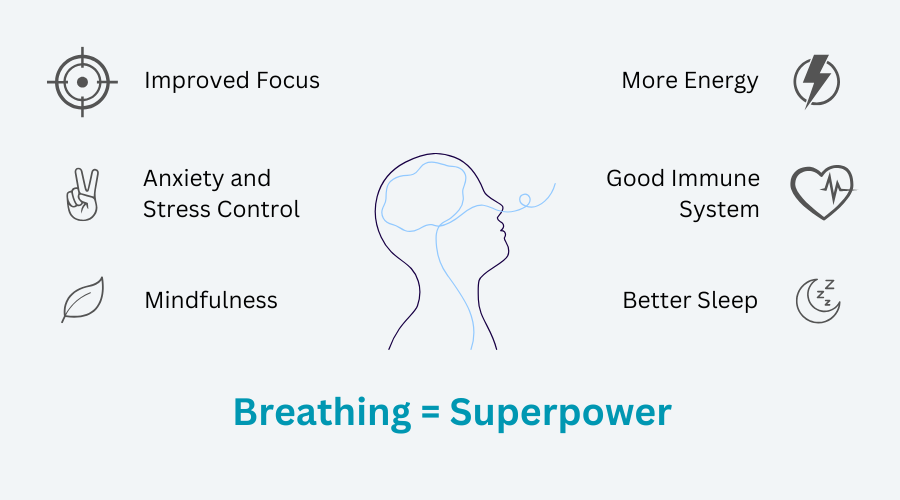
Breathing is not just about providing oxygen to your brain. It has the power to influence your mind too. The way you breathe affects your thoughts and feelings. Breathing has the power to
- Supercharge your focus
- Manage your stress and reduce anxiety
- Calm your mind
- Boost your immune system
- Ensure good sleep
Breathing also has an impact on many other areas such as living in the present moment, emotional stability, healthy heart rate, etc.
In short, breathing can have a direct impact on your brain, body and mind making it an important tool for you.
Are you ready to use your superpower? Just get in.
The science of breathing and the brain: How it works
Breathing is an invincible force. But it is not magic. There is pure science behind it. If you know how breathing works with our brain and body, it will be easy for you to understand the real importance of breathing.
Breathing fuels the brain
Our brain is an incredibly powerful machine that requires a good amount of fuel to operate. Oxygen is the fuel of our brain. Every deep breath sends a large amount of oxygen to our brain – which acts as the brain’s immediate energy. The brain uses that fuel to conduct its overall activities. If the necessary oxygen does not reach the brain with breathing, then your chances of survival are zero.
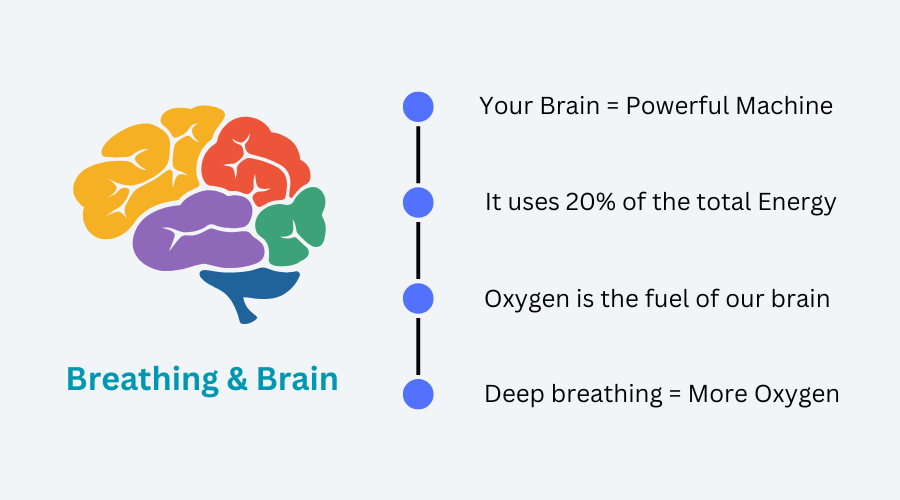
Deep breathing increases the body’s oxygen supply. Then the oxygen mixes better with the blood, which completes the overall activities of our entire body more beautifully.
Breathing and heart
Our brain and heart are always in communication. Breathing plays an important role in maintaining this communication. When this communication is of good quality, we also feel more energized.

When we take a deep breath, our lungs bring the brain and heart into a rhythmic balance. As a result, the connection between our heart and brain becomes stronger – as a result, our heart rate decreases and we feel more relaxed. Similarly, a fast heart rate makes us more alert.
Breathing and Focus
The prefrontal cortex is located just behind our forehead, and it is called the CEO of the brain. This part controls all our planning, decision-making and ability to focus on something. When we concentrate on a task, this part of the brain becomes active.
Slow and deep breathing increases the oxygen supply to our prefrontal cortex. This increases our ability to focus. Practicing this technique for a long time strengthens the neurons in our brains. In addition, deep breathing instantly calms our prefrontal cortex, reducing distractions, which allows our brain to achieve a stronger focus.
Breathing and Stress
There is a part of our brain called the amygdala, which is called the ‘fear center’ of the brain. When we feel anxious and stressed, this small almond-shaped part becomes active. Then the brain scans the surroundings for danger, increases blood pressure, and makes our mind panic.
When we breathe too quickly and shallowly, the amygdala detects it as a danger signal. Conversely, when we breathe long, deep, and rhythmically, the brain thinks we are safe and it keeps the mind calm. As a result of long-term practice, stillness becomes more permanent in our minds.
In addition, when we experience stress, our body produces cortisol, the ‘stress hormone’. It increases blood sugar and blood pressure so that we can react immediately. Because of this, our digestion, immunity, and growth are limited.
Deep breathing challenges the production of cortisol in our body and keeps the body calm, reducing stress, anxiety, and worry.
Breathing and brain waves
The way we breathe directly affects our brain waves. Brain waves are a type of electrical pattern created in the brain that indicates our mental state. For example: When we are stressed, our brain waves are beta. When we are calm, our brain waves are alpha.
When we breathe slowly and deeply, we encourage the brain to convert from beta waves to alpha waves. Conversely, rapid breathing can put the brain into a beta-wave state, which is often the cause of stress.
Breathing and Gray Matter
Gray matter is the brain’s information hub, responsible for memory, emotions, and decision-making. Stress reduces gray matter, weakening these abilities.
Deep breathing lowers cortisol, the stress hormone, helping to protect and even enhance gray matter. More gray matter means a sharper mind, balanced emotions, and better cognitive function.
Breathing and neuroplasticity
Our brain constantly adapts, rewires, and strengthens neural connections through neuroplasticity.
Deep, rhythmic breathing stimulates the hippocampus, improving learning, memory, and mental flexibility. Controlled breathing makes the brain more adaptable, helping us learn faster, think clearer, and stay mentally resilient.
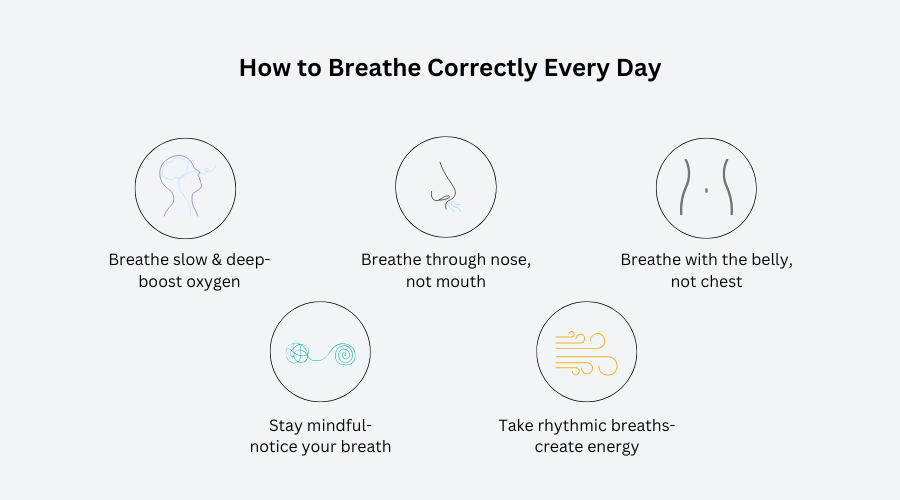
How to Breathe Correctly Every Day
Breathing isn’t just automatic—it’s powerful. But most of us breathe in the wrong way. Do it right, and you’ll feel more energized, focused, and calm. Let’s fix your breath, one step at a time.
1) Breathe Slow & Deep → Boost Oxygen
Rushing your breath drains your energy. Slow it down. Inhale deeply, fill your lungs, and exhale fully. More oxygen equals better brainpower and a stronger body.
2) Breathe Through Your Nose, Not Mouth
Mouth breathing dries you out, makes you tired, and triggers stress. Nose breathing? It filters air, boosts oxygen, and keeps your body balanced.
3) Breathe with the Belly, Not Chest
Shallow chest breathing = stress mode. Belly breathing? That’s your secret weapon for relaxation. Let your stomach expand as you inhale, then gently deflate as you exhale.
4) Stay Mindful → Notice Your Breath
How are you breathing right now? Fast? Shallow? Pay attention. A few mindful breaths can reset your mood in seconds.
5) Take Rhythmic Breaths → Create Energy
Find your flow. Inhale for 4, exhale for 4. Or try 1:2 breathing—inhale 3, exhale 6. Rhythm brings balance. Balance creates energy.
Breathe better. Live better. Start now.
How to use the power of your breath
Breathing and the brain are very closely related. The state of the brain and the whole body depends on breathing. And this dependence is so great that we can easily call breathing a superpower.
But how can we use this power of breathing in everyday life?
Take controlled and deep breaths during stress
Anxiety, worry, overthinking, nervousness – you can use breathing in all kinds of stress. Sit in a quiet place, then slowly inhale and exhale. After practicing for a while, you will feel the change yourself.
Energize your brain before starting a deep focus task
Let’s say you are going to sit down for a task that demands a lot of focus. In that case, before starting the task, close your eyes and slowly fill your lungs with air, hold it for a while, then slowly release it. After repeating it a few times, sit down for work.
During depression
Many times it happens that nothing feels good. Then you take a long, deep breath, and exhale quite forcefully. This will allow more oxygen to reach your brain and you will gradually feel better.
When you are nervous or excited
When we are nervous or excited for some reason, our heart rate increases. The brain does this to make us more careful. But in the modern era, it often harms us – especially when an opportunity can be lost or a relationship can deteriorate. Moreover, excessive excitement is bad for our health. So the next time you feel nervous before entering an interview, drink a little water and practice rhythmic deep breathing. You will see that your mind has become much calmer.
Meditation: The door to a new world
The best way to practice this science of deep breathing is meditation. In meditation, we focus on breathing for a longer time. It can be said that meditation is the next step in breathing practice.
Regular meditation improves the quality of the brain. Moreover, with long-term practice, it reduces the size of the amygdala (fear center). Meditation is a revolutionary way to calm the mind and improve health. While breathing exercises have short-term effects, meditation is the opposite, having long-term effects on your brain.
Simple Breathing Exercises for Beginners
For beginners, here are some simple yet powerful breathing exercises that bring calm and clarity. These exercises are straightforward, but they activate natural relaxation responses in the body and are great for sensing the peacefulness that meditation offers.
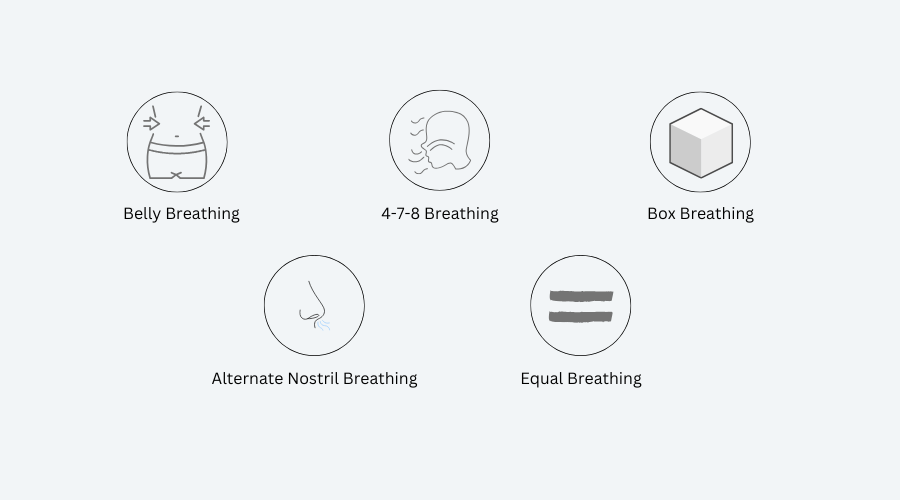
1. Diaphragmatic Breathing (Belly Breathing)
- Sit or lie down in a comfortable position.
- Place one hand on your chest and the other on your belly.
- Breathe in slowly through your nose, feeling your belly rise as it fills with air (your chest should stay still).
- Exhale slowly through your mouth, feeling your belly deflate.
- Repeat this for 5–10 breaths, focusing on the rise and fall of your belly.
Benefits:
- Belly breathing engages the diaphragm, which stimulates the vagus nerve—a nerve responsible for activating the body’s relaxation response.
- This reduces the release of stress hormones like cortisol, calming the nervous system and lowering heart rate and blood pressure.
- With regular practice, this exercise shifts your body into a “rest-and-digest” state, reducing anxiety and improving focus.
2. 4-7-8 Breathing Technique
- Sit with your back straight and place the tip of your tongue against the roof of your mouth.
- Inhale quietly through your nose for a count of 4.
- Hold your breath for a count of 7.
- Exhale completely through your mouth, making a whoosh sound, for a count of 8.
- Repeat for 4 cycles.
Benefits:
- Holding your breath after inhaling allows more oxygen to circulate through your bloodstream, which helps relax the muscles and mind.
- The extended exhale activates the parasympathetic nervous system, signalling your body to relax deeply.
- This technique is known to improve sleep quality, reduce anxiety, and improve mental clarity by calming overactive beta brainwaves.

3. Box Breathing (Square Breathing)
- Sit comfortably with your feet grounded.
- Inhale deeply through your nose for a count of 4.
- Hold your breath for a count of 4.
- Exhale slowly through your mouth for a count of 4.
- Hold again for a count of 4.
- Repeat this for 4–5 cycles.
Benefits:
- Box breathing regulates the oxygen and carbon dioxide balance in your blood, stabilizing your energy levels and calming your body’s stress response.
- Each step of breathing, holding, and exhaling slows your mind, shifting it into a relaxed state, which enhances focus and emotional stability.
- It’s an effective way to lower heart rate and quiet an anxious mind, as it increases calming alpha brainwaves and reduces stress hormone levels.
4. Alternate Nostril Breathing (Nadi Shodhana)
- Sit up straight and relax your shoulders.
- Place your right thumb over your right nostril, closing it off.
- Inhale slowly through your left nostril.
- Close your left nostril with your ring finger and release your right nostril.
- Exhale through your right nostril.
- Inhale through the right nostril, close it with your thumb and exhale through the left nostril.
- Repeat for 5–10 rounds, focusing on the flow of air.
Benefits:
- This practice balances the left and right hemispheres of the brain, harmonizing logical and creative thinking.
- It enhances mental clarity, reduces stress, and boosts focus by engaging both the sympathetic (energy-producing) and parasympathetic (calming) nervous systems.
- Alternate nostril breathing lowers anxiety and improves mood by creating a rhythm that synchronizes alpha and theta brainwaves, ideal for deep relaxation and mental balance.
5. Equal Breathing (Sama Vritti)
- Sit or lie comfortably.
- Inhale slowly through your nose for a count of 4.
- Exhale through your nose for the same count of 4.
- Keep the length of each inhale and exhale equal, focusing on a smooth, steady breath.
- Gradually increase the count to 6 or 8 as you get more comfortable.
- Repeat for 5–10 minutes.
Benefits:
- By keeping the breath even, you encourage a state of homeostasis, or balanced bodily functions.
- Equal breathing calms the brain, promoting alpha brainwaves linked to relaxation and creativity.
- It’s particularly helpful for grounding your thoughts and reducing overthinking, as it signals the nervous system to dial down stress responses.
Hope you have learned a little about the power of breath hidden within you. Also, if you follow the methods shown here properly, you will easily see the maximum power of this superpower of yours.
Knowing your brain is real power!

